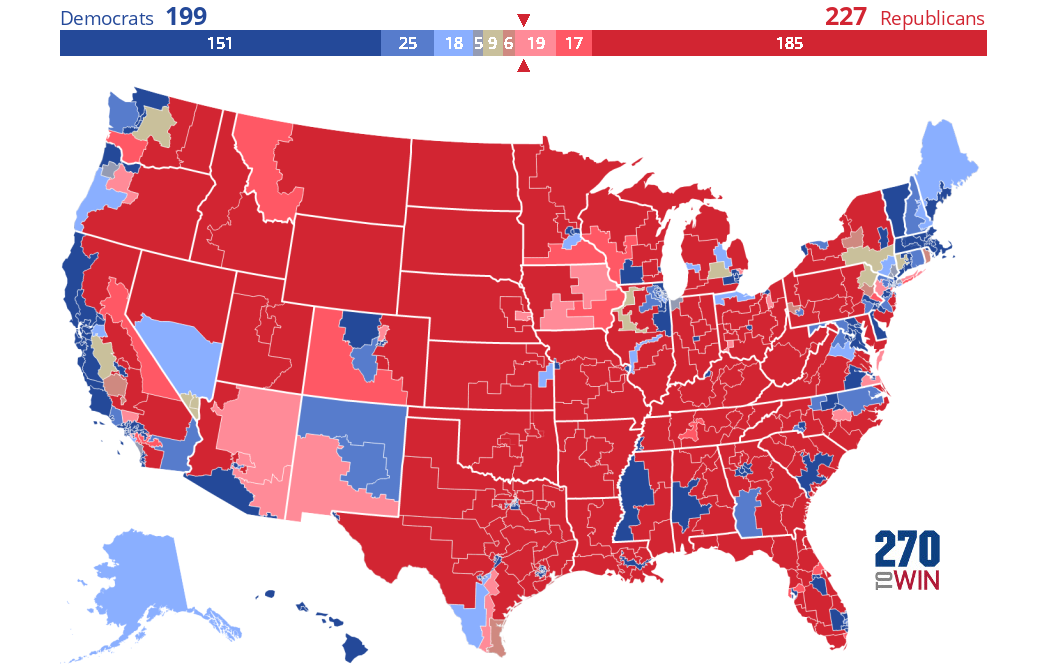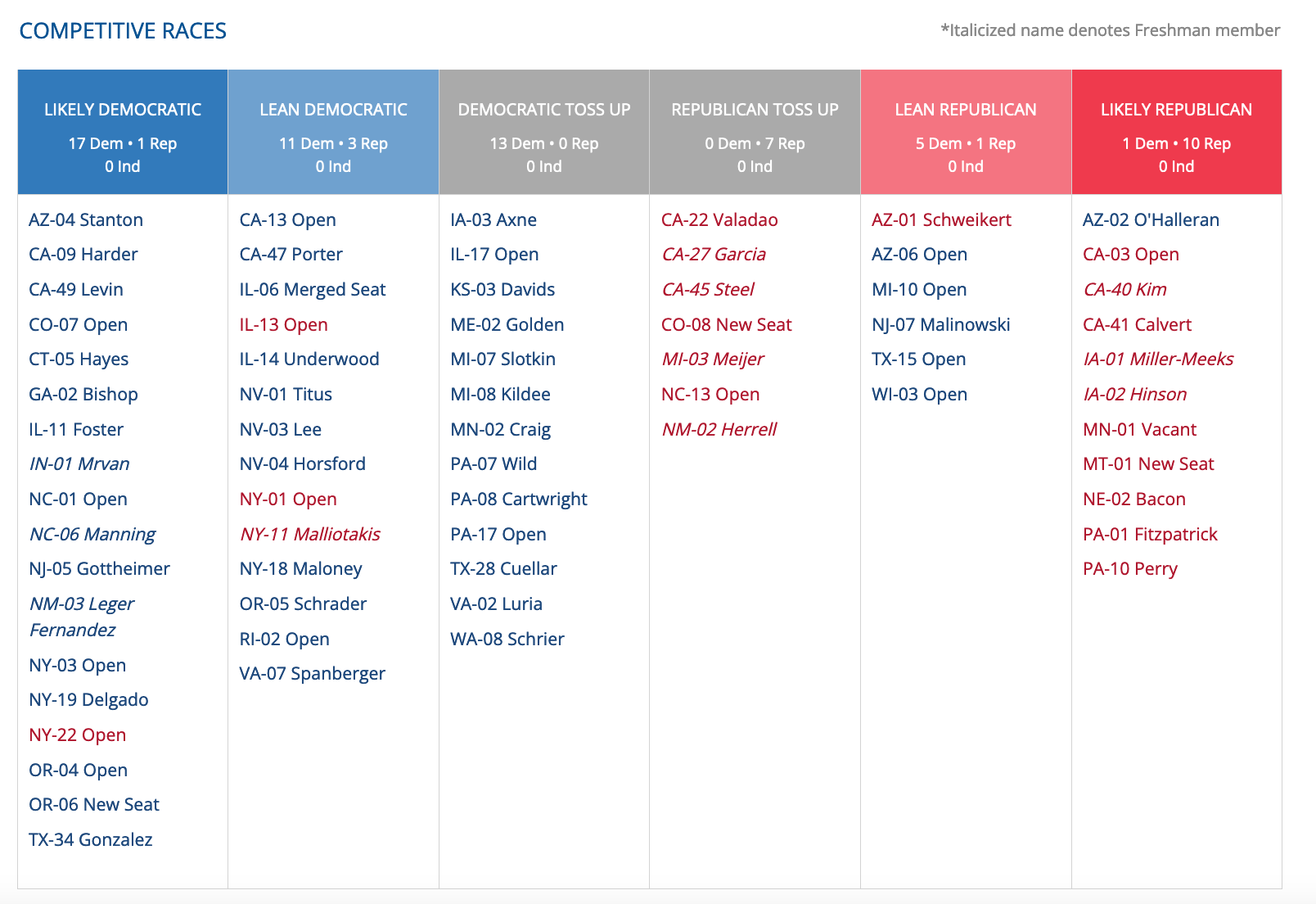Out of 435 House Districts how many are highly competitive?
Critical Analysis
Find answers to the following questions using the visual above, any links below, and your knowledge of American government and politics:
According to the chart above, out of 435 seats in the U.S. House of Representatives how many were highly competitive (swing seats*) in 2022?
Based on the data from the chart above, describe how the number of competitive seats has changed over time.
While redistricting — and gerrymandering — may seem like the obvious culprit for changes in the number of competitive seats, the Cook Political Report’s Dave Wasserman has argued that the main driver behind the decline in competitive seats is actually geographic self-sorting based on political identity. While some districts are in fact drawn to be less competitive, for the most part, voters who share political identities simply choose to live near one another. Rural districts therefore are redder than ever, while urban districts are Democratic strongholds. Explain what self-sorting by political identity means in relation to your life.
What is the most significant consequence of the changing number of competitive seats?
Describe the general process used to draw district lines in U.S. house races?
Arizona, California, Colorado, Idaho, Michigan, New York, and Washington — all draw both state and federal districts using an independent commission, with regulations limiting direct participation by elected officials. How do you think this impacts the number of competitive seats in these states?
If you were to extrapolate the trends from the visual above into the future what would the chart look like by the year 2032?
For over two weeks the House of Representatives was without a Speaker of the House. Explain how that Speaker vacancy is related to the trends displayed in the visual above.
If you were a representative in a safe seat (non-competitive seat), explain what incentive you would have to listen to the will of the people?
How would having more competitive elections, instead of elections where we already know who will win in almost all elections, impact the kind of policies we get?
*A swing seat is a district held with a small majority that is generally competitive in a legislative election. Because the number of Democrats and Republicans in a swing district are so close, a swing seat might be won by a Republican one election, and then a Democrat the next. This is also known as a competitive seat, the opposite of which is a safe sea: a district that is drawn so that it is predictably won by one party or the other, so the success of that party's candidate is almost taken for granted.
Learning Extension
I have never lived in a swing seat during my adulthood. Instead, every districts I have lived in has been safe for one party. Check out the FiveThirtyEight report on the current state of competition in U.S. House districts, the Cook Political Report chart of very few competitive races from 2022 or take a gander at this interactive map of competitive seats from 270 to Win or just watch the videos on redistricting below.
Action Extension
Find out if your district is a swing seat. Share your answer in class or online. Contact your US House representative and explain to them why they do or don't need to listen to the will of the people or compromise in any way.
Lab
Find someone who has moved to live nearer to politically like-minded people. Interview them to learn more about the story of why they moved. Try to fit their story into the national story of declining competitive districts. Share their story with your classmates.




